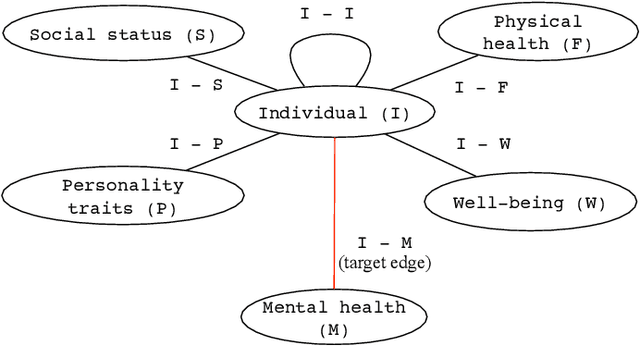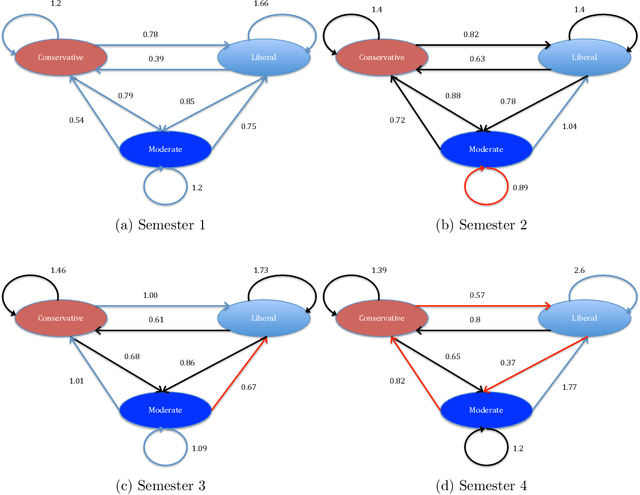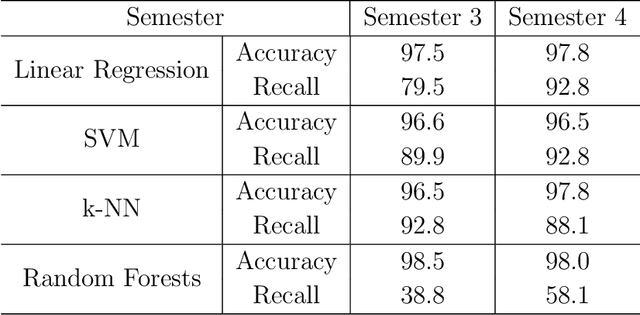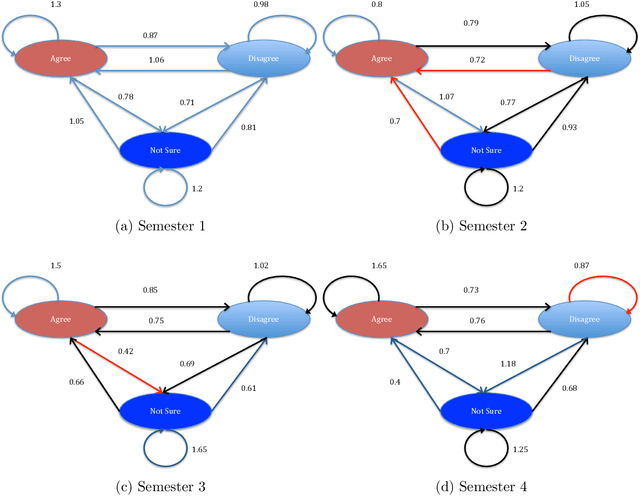Omar Lizardo
A Machine Learning Approach to Predicting Continuous Tie Strengths
Jan 23, 2021


Abstract:Relationships between people constantly evolve, altering interpersonal behavior and defining social groups. Relationships between nodes in social networks can be represented by a tie strength, often empirically assessed using surveys. While this is effective for taking static snapshots of relationships, such methods are difficult to scale to dynamic networks. In this paper, we propose a system that allows for the continuous approximation of relationships as they evolve over time. We evaluate this system using the NetSense study, which provides comprehensive communication records of students at the University of Notre Dame over the course of four years. These records are complemented by semesterly ego network surveys, which provide discrete samples over time of each participant's true social tie strength with others. We develop a pair of powerful machine learning models (complemented by a suite of baselines extracted from past works) that learn from these surveys to interpret the communications records as signals. These signals represent dynamic tie strengths, accurately recording the evolution of relationships between the individuals in our social networks. With these evolving tie values, we are able to make several empirically derived observations which we compare to past works.
The power of dynamic social networks to predict individuals' mental health
Aug 06, 2019



Abstract:Precision medicine has received attention both in and outside the clinic. We focus on the latter, by exploiting the relationship between individuals' social interactions and their mental health to develop a predictive model of one's likelihood to be depressed or anxious from rich dynamic social network data. To our knowledge, we are the first to do this. Existing studies differ from our work in at least one aspect: they do not model social interaction data as a network; they do so but analyze static network data; they examine "correlation" between social networks and health but without developing a predictive model; or they study other individual traits but not mental health. In a systematic and comprehensive evaluation, we show that our predictive model that uses dynamic social network data is superior to its static network as well as non-network equivalents when run on the same data.
Heterogeneous network approach to predict individuals' mental health
Jun 11, 2019



Abstract:Depression and anxiety are critical public health issues affecting millions of people around the world. To identify individuals who are vulnerable to depression and anxiety, predictive models have been built that typically utilize data from one source. Unlike these traditional models, in this study, we leverage a rich heterogeneous data set from the University of Notre Dame's NetHealth study that collected individuals' (student participants') social interaction data via smartphones, health-related behavioral data via wearables (Fitbit), and trait data from surveys. To integrate the different types of information, we model the NetHealth data as a heterogeneous information network (HIN). Then, we redefine the problem of predicting individuals' mental health conditions (depression or anxiety) in a novel manner, as applying to our HIN a popular paradigm of a recommender system (RS), which is typically used to predict the preference that a person would give to an item (e.g., a movie or book). In our case, the items are the individuals' different mental health states. We evaluate three state-of-the-art RS approaches. Also, we model the prediction of individuals' mental health as another problem type -- that of node classification (NC) in our HIN, evaluating in the process four node features under logistic regression as a proof-of-concept classifier. We find that our RS and NC network methods produce more accurate predictions than a logistic regression model using the same NetHealth data in the traditional non-network fashion as well as a random-approach. Also, we find that RS outperforms NC. This is the first study to integrate smartphone, wearable sensor, and survey data in an HIN manner and use RS or NC on the HIN to predict individuals' mental health conditions.
Influence of Personal Preferences on Link Dynamics in Social Networks
Sep 21, 2017



Abstract:We study a unique network dataset including periodic surveys and electronic logs of dyadic contacts via smartphones. The participants were a sample of freshmen entering university in the Fall 2011. Their opinions on a variety of political and social issues and lists of activities on campus were regularly recorded at the beginning and end of each semester for the first three years of study. We identify a behavioral network defined by call and text data, and a cognitive network based on friendship nominations in ego-network surveys. Both networks are limited to study participants. Since a wide range of attributes on each node were collected in self-reports, we refer to these networks as attribute-rich networks. We study whether student preferences for certain attributes of friends can predict formation and dissolution of edges in both networks. We introduce a method for computing student preferences for different attributes which we use to predict link formation and dissolution. We then rank these attributes according to their importance for making predictions. We find that personal preferences, in particular political views, and preferences for common activities help predict link formation and dissolution in both the behavioral and cognitive networks.
* 12 pages
Predictors of short-term decay of cell phone contacts in a large scale communication network
Feb 11, 2011



Abstract:Under what conditions is an edge present in a social network at time t likely to decay or persist by some future time t + Delta(t)? Previous research addressing this issue suggests that the network range of the people involved in the edge, the extent to which the edge is embedded in a surrounding structure, and the age of the edge all play a role in edge decay. This paper uses weighted data from a large-scale social network built from cell-phone calls in an 8-week period to determine the importance of edge weight for the decay/persistence process. In particular, we study the relative predictive power of directed weight, embeddedness, newness, and range (measured as outdegree) with respect to edge decay and assess the effectiveness with which a simple decision tree and logistic regression classifier can accurately predict whether an edge that was active in one time period continues to be so in a future time period. We find that directed edge weight, weighted reciprocity and time-dependent measures of edge longevity are highly predictive of whether we classify an edge as persistent or decayed, relative to the other types of factors at the dyad and neighborhood level.
 Add to Chrome
Add to Chrome Add to Firefox
Add to Firefox Add to Edge
Add to Edge